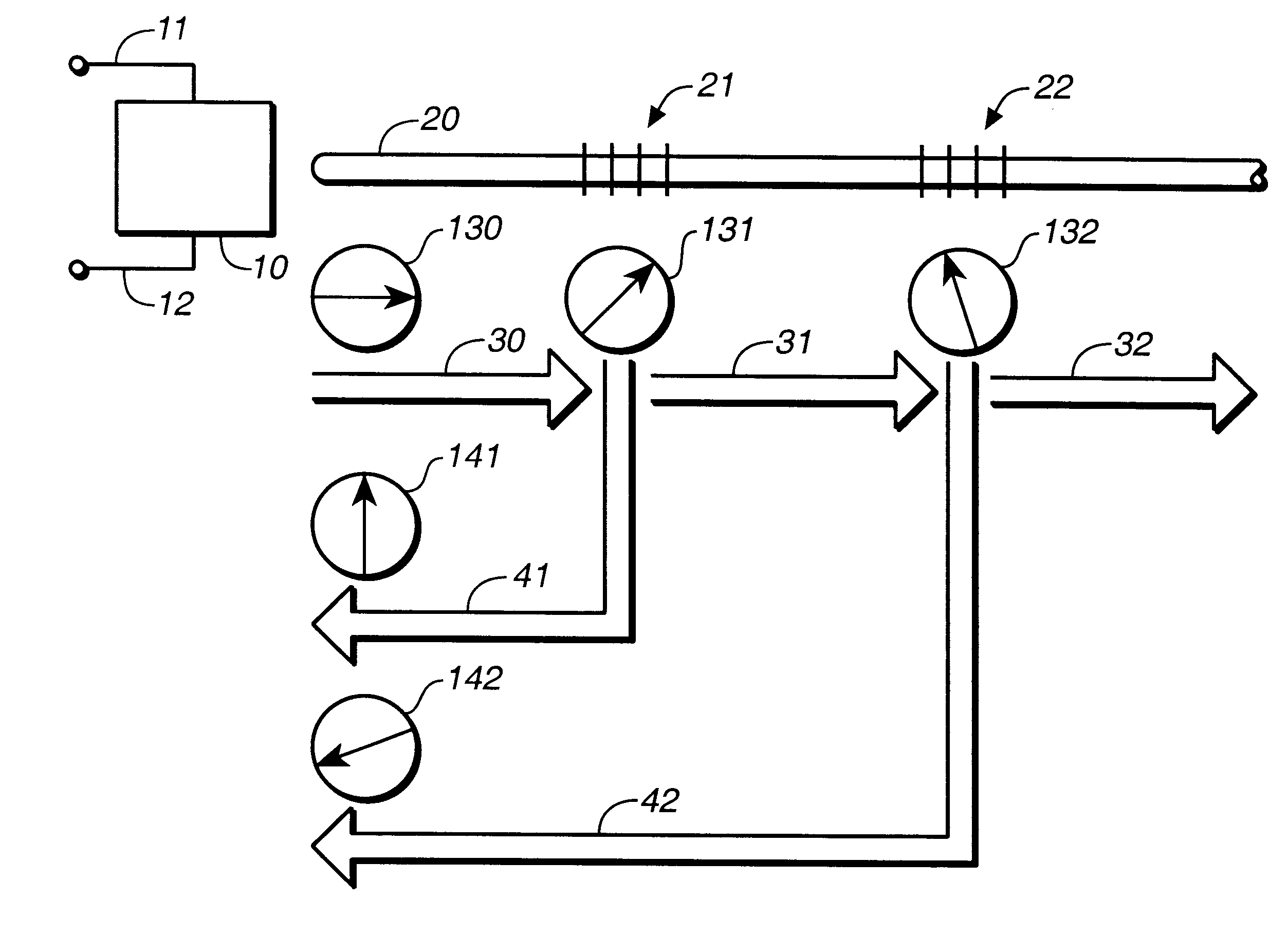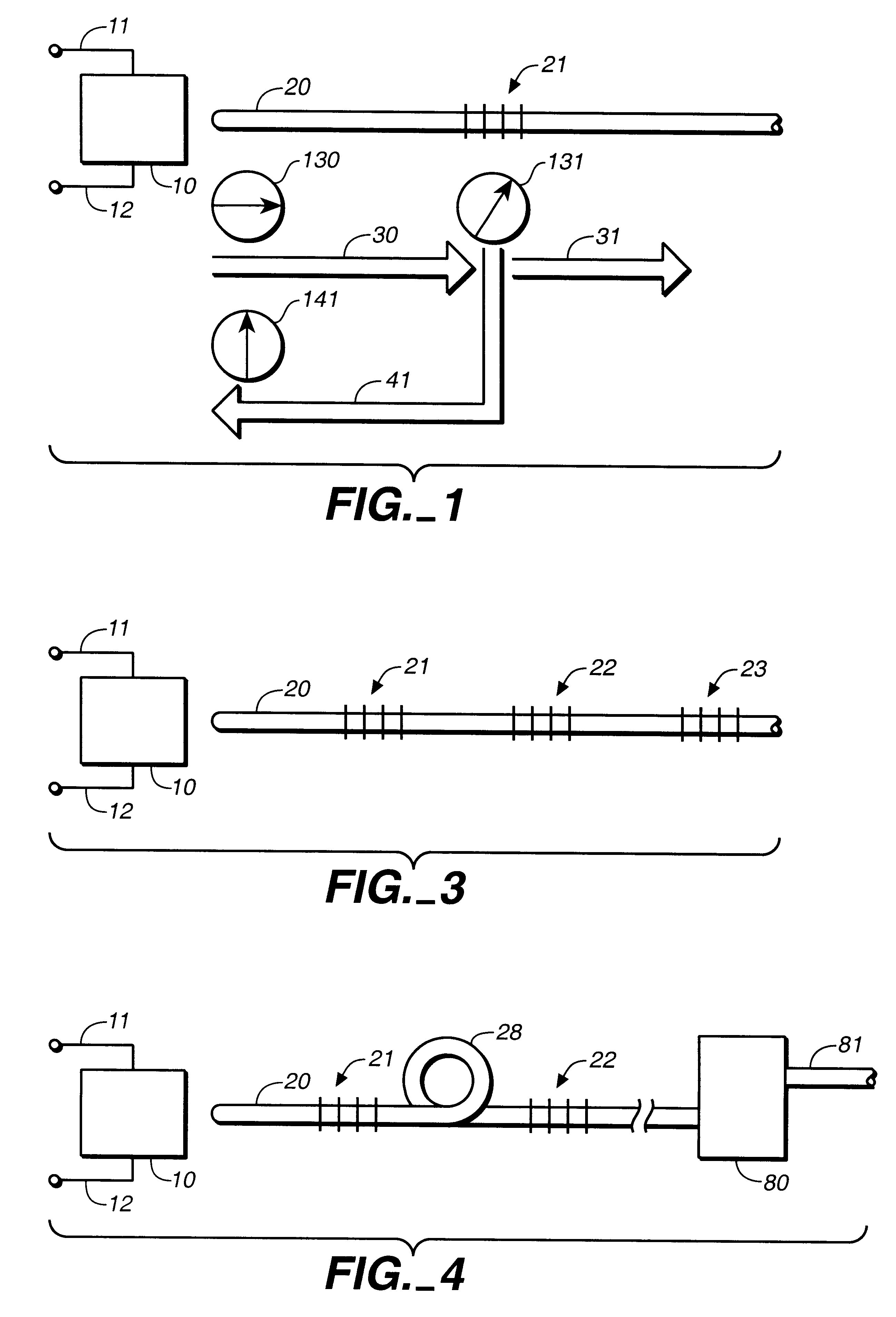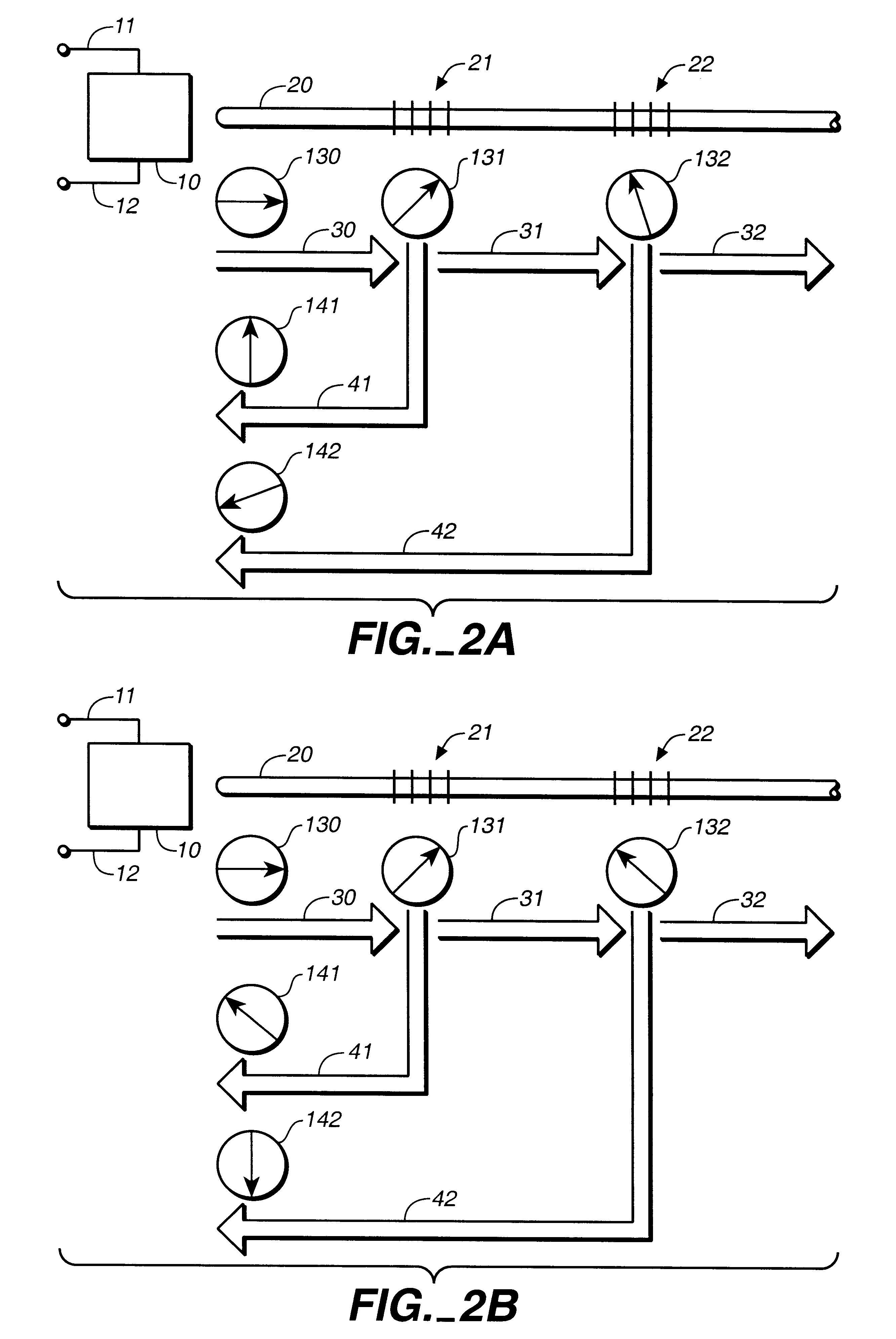Polarization-insensitive laser stabilization using multiple waveguide gratings
a laser stabilization and waveguide technology, applied in the direction of laser optical resonator construction, laser details, optical resonator shape and construction, etc., can solve the problems of laser source dropout, system failure of laser source stabilization system, laser source reflected light not fully coherent in phase with laser source light, etc., to achieve efficient low-cost
- Summary
- Abstract
- Description
- Claims
- Application Information
AI Technical Summary
Benefits of technology
Problems solved by technology
Method used
Image
Examples
first embodiment
2. First Embodiment of Two Reflectors
FIG. 2A is a schematic illustration of another embodiment of laser source 10 optically coupled to polarization-insensitive optical waveguide 20 in which reflector 21 is formed. These features, including the operating mode of laser source 10, the polarization orientation of emitted light 30 and the polarization orientation of reflected light 41, are identical to corresponding features in the embodiment illustrated in FIG. 1. In the embodiment illustrated in FIG. 2A, however, an additional reflector 22 is formed in optical waveguide 20. Symbol 132 represents the polarization orientation of light 31, which is not reflected by reflector 21, as it arrives at reflector 22.
A portion 42 of light 31 is reflected by reflector 22 toward laser source 10. The light 32 that is not reflected by reflector 22 continues along optical waveguide 20 away from laser source 10 and is available for use in an application. Because optical waveguide 20 is polarization inse...
second embodiment
3. Second Embodiment of Two Reflectors
FIG. 2B is a schematic illustration of yet another embodiment of laser source 10 optically coupled to polarization-insensitive optical waveguide 20, which comprises reflectors 21 and 22. The only difference between the embodiment of FIG. 2B and the embodiment of FIG. 2A is a difference in polarization orientations 131, 132, 141 and 142. A number of factors may cause a change in polarization orientation such as stress in optical waveguide 20, perhaps induced by coiling, changes in ambient temperature or changes in laser source drive current. Thus, the embodiments illustrated in FIGS. 2A and 2B can be considered representative of the same apparatus at two different instants of time.
In the embodiment illustrated in FIG. 2B, the polarization orientation 142 of reflected light 42 is substantially orthogonal to the polarization orientation 130 of emitted light 30; therefore, reflected light 42 is ineffective as a stabilizing influence on laser source ...
PUM
 Login to View More
Login to View More Abstract
Description
Claims
Application Information
 Login to View More
Login to View More - R&D
- Intellectual Property
- Life Sciences
- Materials
- Tech Scout
- Unparalleled Data Quality
- Higher Quality Content
- 60% Fewer Hallucinations
Browse by: Latest US Patents, China's latest patents, Technical Efficacy Thesaurus, Application Domain, Technology Topic, Popular Technical Reports.
© 2025 PatSnap. All rights reserved.Legal|Privacy policy|Modern Slavery Act Transparency Statement|Sitemap|About US| Contact US: help@patsnap.com



